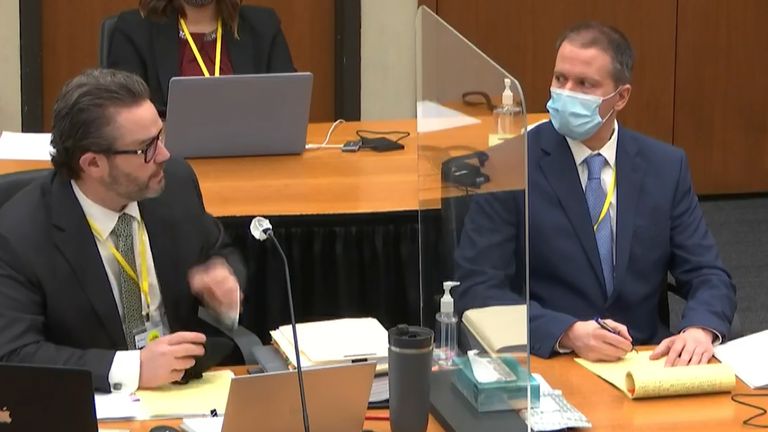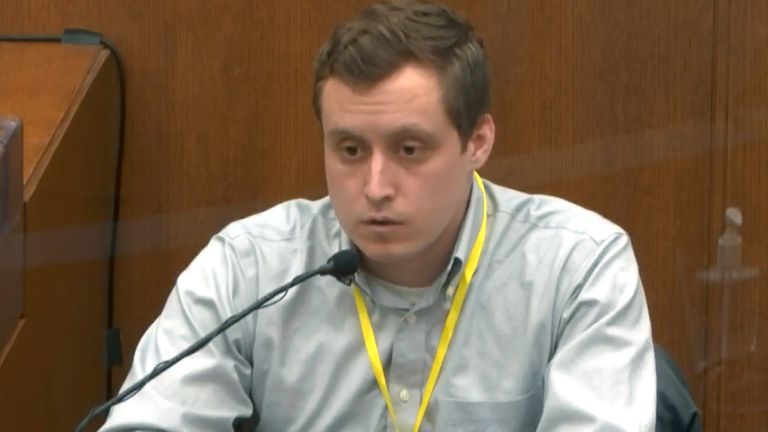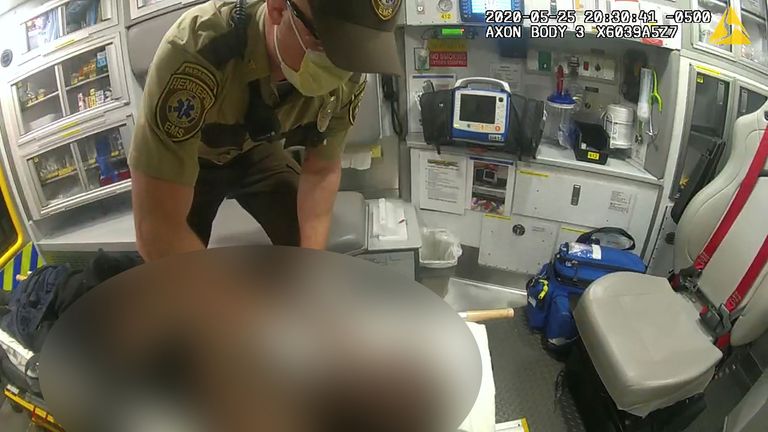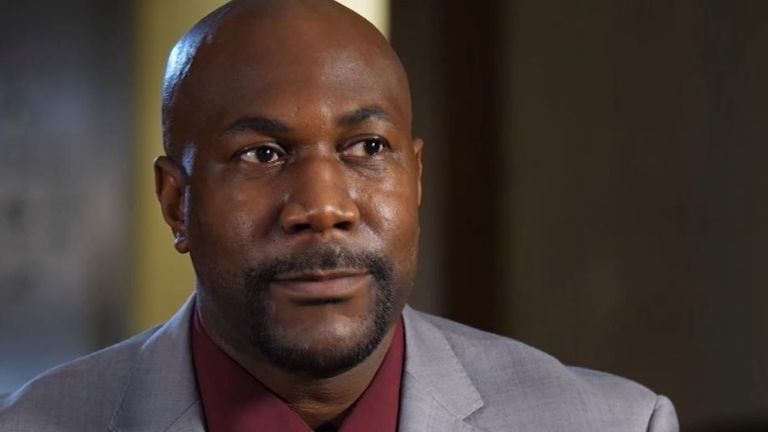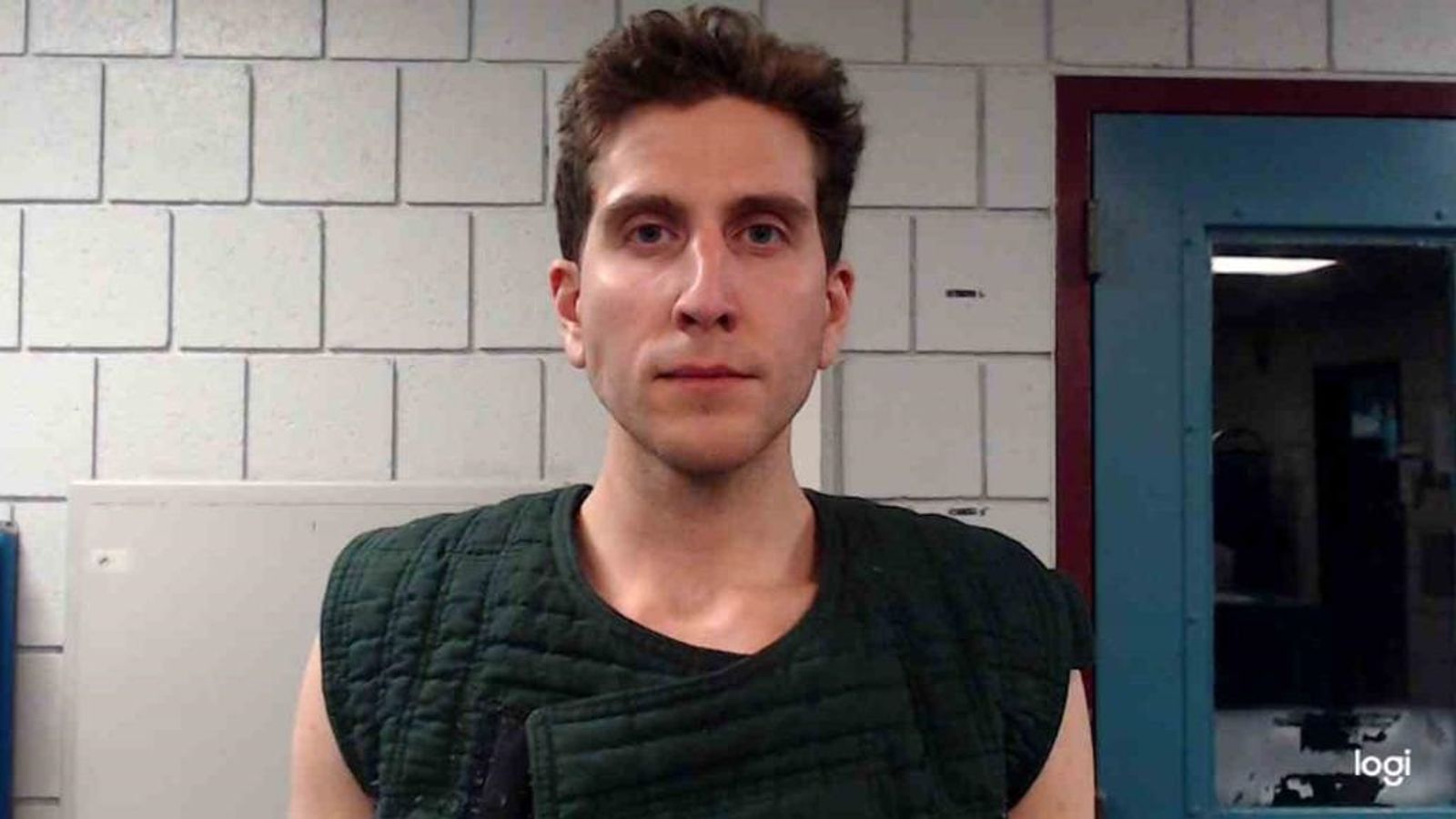A Minneapolis police chief has told the trial of Derek Chauvin that the former officer violated departmental policy in pinning his knee on George Floyd’s neck and keeping him down after he stopped resisting.
Medaria Arradondo gave evidence against his own officer as focus turned to the accused’s training on day six of the trial.
Chauvin, 45, faces three charges of second and third-degree murder and second-degree manslaughter following the death of unarmed George Floyd last year.
He is accused of putting his knee on the 46-year-old man’s neck for nine minutes and 29 seconds outside a shop, where Mr Floyd had allegedly tried to use a fake $20 note to pay for a pack of cigarettes.
The deadly incident was captured on video by a bystander, sparking US-wide protests and a global debate.
Mr Arradondo said Chauvin’s actions were “in no way, shape or form” part of the department’s policy or training and “certainly [were] not part of our ethics or our values”.
Chauvin used too much pressure on Floyd’s neck, Mr Arradondo said, pointing to police training that he said emphasised the “sanctity of life”.
He also did not “de-escalate” the situation even as Mr Floyd fell unconscious and he did not provide first aid to him, despite being trained to do so, the court heard.
Mr Arrandondo, the city’s first black chief, fired Chauvin and three other officers the day after Mr Floyd’s death last May, and in June called it “murder”.
Eric Nelson, the defence lawyer for Chauvin, said both unconscious and conscious restraints were allowed under the police force’s policy, to which Mr Arradondo agreed.
But he said it is against their policy to “indefinitely” place a leg on the neck of a subject and that he “vehemently” disagreed with Chauvin’s actions.
His testimony came after the doctor who pronounced Mr Floyd dead told the court he believed the man’s heart likely stopped because of a lack of oxygen.
Dr Bradford Langenfeld, a senior resident on duty that night at Hennepin County Medical Center, told the jury Mr Floyd’s heart had stopped by the time he arrived at the hospital.
He added that, based on the information he had, it was “more likely than the other possibilities” that Mr Floyd’s heart stopped because of asphyxia, or insufficient oxygen.
The defence argues that Chauvin did what he was trained to do and that Mr Floyd’s use of illegal drugs and his underlying health conditions caused his death.
However, the prosecution say it was Chauvin who caused Mr Floyd’s death.
Before he was pinned to the ground, a handcuffed and frantic Mr Floyd struggled with police who were trying to put him in a squad car, saying he was claustrophobic.
Officers kept restraining him – with Chauvin kneeling on his neck, another kneeling on his back and a third holding his feet – until the ambulance arrived, even after he became unresponsive, according to testimony and video footage.
One officer asked twice if they should roll Mr Floyd on his side to aid his breathing, and later said calmly that he thought Mr Floyd was passing out. Another checked Mr Floyd’s wrist for a pulse and said he couldn’t find one.
The officers also rebuffed offers of help from an off-duty Minneapolis firefighter who wanted to administer aid or tell officers how to do it, the court heard last week.
Mr Langenfeld said he was not told of any efforts at the scene by bystanders or police to resuscitate Mr Floyd but that paramedics had said they tried for around 30 minutes.
He added that “any amount of time” a patient spends in cardiac arrest without immediate CPR decreases the chance of a good outcome. He said there is an approximately 10-15% decrease in survival for every minute that CPR is not administered.
Mr Nelson questioned Mr Langenfeld about whether some drugs can cause hypoxia, or insufficient oxygen.
The doctor acknowledged that fentanyl and methamphetamine, both of which were found in Mr Floyd’s body, can do so.
Under cross-examination, Mr Langenfeld said Mr Floyd’s carbon dioxide levels were more than twice as high as levels in a healthy person, and he agreed that that could be attributed to a respiratory problem.
But on questioning from the prosecution, the doctor said the high levels were also consistent with cardiac arrest.
Questioning police chief Medaria Arradondo, prosecutor Steve Schleicher noted that while some people may become more dangerous under the influence of drugs or alcohol, some may actually be “more vulnerable”.
Mr Arradondo agreed and acknowledged that this must also be taken into consideration when officers decide to use force.
“It’s recognising that when we get the call from our communities, it may not often be their best day, and they may be experiencing something that’s very traumatic,” the chief said.
Mr Arradondo said officers are trained in basic first aid, including chest compressions, and department policy requires them to request medical assistance and provide necessary aid as soon as possible before paramedics arrive.
Officers’ first aid training is “very vital because those seconds are vital,” Mr Arradondo said, adding: “And so we absolutely have a duty to render that.”
The trial continues.
Analysis: Testimony from a man who has served at every level of Minneapolis law enforcement since 1989 is undoubtedly powerful evidence
By Greg Milam, US correspondent
It was no surprise that Minneapolis Police Chief Medaria Arradondo should have been so condemning of the actions of one of his own officers from the witness stand.
This is the police chief after all who fired Derek Chauvin and three other officers the day after George Floyd’s death in May last year.
Chief Arradondo was one of the most hotly anticipated witnesses in the Chauvin trial. It is highly unusual for such a senior police officer to testify in a murder trial, let alone for the prosecution.
But Mr Arradondo’s testimony, that Chauvin acted contrary to the police department’s policies on use of fire, defensive tactics and de-escalation, will have carried real heft with the jurors sitting a few feet from him.
The first words of the department’s use of force policy are that “sanctity of life and protection of the public shall be the cornerstone”.
What he saw that night in May, when he was told to watch the video of his officer “killing a man”, was in defiance of everything he says his police department stands for.
Even the decision to arrest someone for an allegation of using a counterfeit bank note was not in line with policy, he said.
Chauvin’s lawyer Eric Nelson picked at the chief’s evidence, exploring the nuances of language and intent, with the aim of introducing some doubt in the minds of the jury.
But the view of a man who has served at every level of Minneapolis law enforcement since 1989 is undoubtedly powerful evidence.
George Floyd Killing: The Trial – We will bring you live continuous coverage of court proceedings in the trial of Derek Chauvin on our website, app, YouTube and Sky Pop Up Channel on 524


